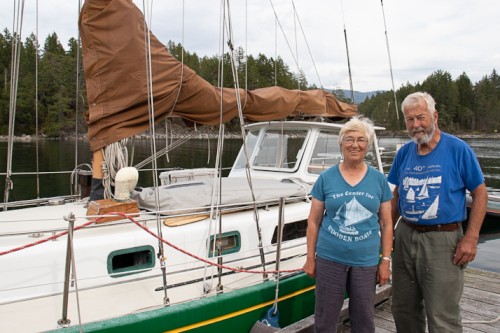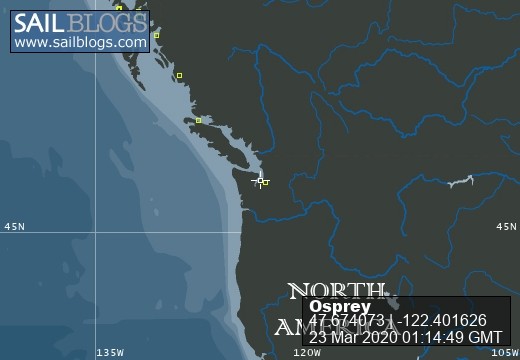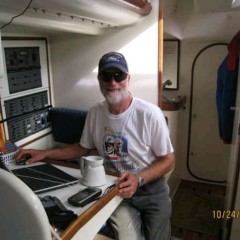Voyages North
23 July 2023
21 August 2021
11 July 2021 | Posted in Seattle
16 May 2021
07 January 2021
10 April 2020 | Posted in Seattle
31 August 2019 | Posted at Port McNeill
31 August 2019
30 August 2019
30 August 2019 | Posted at Port MCNeill
13 August 2019 | Posted at Prince Rupert
13 August 2019 | Posted at Prince Rupert
03 August 2019 | Posted at Ketchikan
02 August 2019 | Posted at Metlakatla
02 August 2019 | posted in Metlakatla AK
22 July 2019 | Posted at Klawock/Craig
22 July 2019 | Posted at Klawock/Craig
09 July 2019 | Posted at Juneau
09 July 2019 | Posted at Juneau
27 June 2019
Baird Glacier starts retreating!
11 December 2013 | posted in Seattle
Elsie Hulsizer

Photo: Baird Glacier in Thomas Bay, 2011. The glacier extends out like a long tongue onto a glacial outwash plain.
Baird Glacier in Thomas Bay (in Frederick Sound north of Petersburg) has been recognized by glaciologists as unusual among Alaska Coast Mountain glaciers because it has been advancing since the late 19th century while other glaciers have retreated. But now glaciologists have determined that in the last few years Baird Glacier has also started retreating.
Recently, I found two items that explain the glacier: A 2008 USGS document Glaciers of North America - Glaciers of Alaska and a blog by glaciologist Mauri Pelto, posted just recently - in September, 2013. Both of these documents use aerial photos to explain what's going on.
To boaters like us, what's unusual about Baird Glacier is not its advance or retreat (which after all happens at glacial speed) but its large outwash plain which gives an opportunity to go ashore and walk. We've hiked there three times: in 2007, 2011 and 2013. Walking the glacier's outwash plain is an experience I won't forget. A cold wind whistled off the glacier; the land beneath our feet was a field of cobbles covered with moss and lichen; and terns, killdeer and other birds flew overhead. The sheer size of surrounding mountains and their great distance gave me a feeling of isolation combined with a frisson of fear and a sense of awe. (For specific descriptions of our experiences walking this outwash plain see Glaciers, Bears and Totems and earlier posts of this blog in 2011and 2013)
The news that Baird Glacier is now retreating explains some things that puzzled me. It didn't look like what I imagined an advancing glacier would look like. Instead of ice-blue ramparts and an active calving face, the glacier was gray and shaped like a long tongue growing thinner as it approaches the water.
This year when we visited the glacier, we saw something new. The thick carpet of moss we had seen in 2011 was covered with a blanket of silt. What happened?

The outwash plain in 2013. Silt covered the rocks and moss.
SE Alaska's glaciers are all alpine glaciers, meaning they flow downhill through valleys. They are essentially ice rivers, which is what they look like. Whether or not the glacial terminus (the leading edge at the bottom) is advancing or retreating, the alpine glaciers themselves are always moving, pushed by pressure from the weight of ice augmented by gravity. Water flowing underneath adds lubrication, speeding the process. The glacier's terminus advances when it moves faster than it melts. It retreats when it moves slower than it melts. Picture a glacier as a conveyor belt loaded with ice at the top and melting as it moves downhill. If each day the ice melts away a little closer to the top, then the glacier is retreating.
But in the case of Baird Glacier, an unusually large flow of melting ice from underneath the glacier built up a plain of sediment in the bay as the glacier advanced. The sediment built up faster than the glacier advanced, so that, at least since 1887 when it was first surveyed, there has always been land in front of the glacier.
Since 2005 the glacier has been narrowing and thinning which means less ice arrives at the terminus. Then in 2013, two lakes appeared at the terminus indicating melting ice - further evidence of retreat. In fact, we saw one of those lakes when we hiked the outwash plain last summer.

A lake at the terminus of Baird Glacier, 2013.
The lakes may also explain the blanket of silt covering the plain that we saw this summer. If a lake filled up and then its glacial dam burst, it could have sent water with its load of silt flooding across the plain. I'd rather not think about what would happen if one of those dams burst when we were walking on the plain.
Now that Baird Glacier has joined the crowd of other SE Alaskan glaciers in retreat, it will be interesting to see what it will look like in future years. That gives an extra reason for visiting Thomas Bay.
Baird Glacier in Thomas Bay (in Frederick Sound north of Petersburg) has been recognized by glaciologists as unusual among Alaska Coast Mountain glaciers because it has been advancing since the late 19th century while other glaciers have retreated. But now glaciologists have determined that in the last few years Baird Glacier has also started retreating.
Recently, I found two items that explain the glacier: A 2008 USGS document Glaciers of North America - Glaciers of Alaska and a blog by glaciologist Mauri Pelto, posted just recently - in September, 2013. Both of these documents use aerial photos to explain what's going on.
To boaters like us, what's unusual about Baird Glacier is not its advance or retreat (which after all happens at glacial speed) but its large outwash plain which gives an opportunity to go ashore and walk. We've hiked there three times: in 2007, 2011 and 2013. Walking the glacier's outwash plain is an experience I won't forget. A cold wind whistled off the glacier; the land beneath our feet was a field of cobbles covered with moss and lichen; and terns, killdeer and other birds flew overhead. The sheer size of surrounding mountains and their great distance gave me a feeling of isolation combined with a frisson of fear and a sense of awe. (For specific descriptions of our experiences walking this outwash plain see Glaciers, Bears and Totems and earlier posts of this blog in 2011and 2013)
The news that Baird Glacier is now retreating explains some things that puzzled me. It didn't look like what I imagined an advancing glacier would look like. Instead of ice-blue ramparts and an active calving face, the glacier was gray and shaped like a long tongue growing thinner as it approaches the water.
This year when we visited the glacier, we saw something new. The thick carpet of moss we had seen in 2011 was covered with a blanket of silt. What happened?

The outwash plain in 2013. Silt covered the rocks and moss.
SE Alaska's glaciers are all alpine glaciers, meaning they flow downhill through valleys. They are essentially ice rivers, which is what they look like. Whether or not the glacial terminus (the leading edge at the bottom) is advancing or retreating, the alpine glaciers themselves are always moving, pushed by pressure from the weight of ice augmented by gravity. Water flowing underneath adds lubrication, speeding the process. The glacier's terminus advances when it moves faster than it melts. It retreats when it moves slower than it melts. Picture a glacier as a conveyor belt loaded with ice at the top and melting as it moves downhill. If each day the ice melts away a little closer to the top, then the glacier is retreating.
But in the case of Baird Glacier, an unusually large flow of melting ice from underneath the glacier built up a plain of sediment in the bay as the glacier advanced. The sediment built up faster than the glacier advanced, so that, at least since 1887 when it was first surveyed, there has always been land in front of the glacier.
Since 2005 the glacier has been narrowing and thinning which means less ice arrives at the terminus. Then in 2013, two lakes appeared at the terminus indicating melting ice - further evidence of retreat. In fact, we saw one of those lakes when we hiked the outwash plain last summer.

A lake at the terminus of Baird Glacier, 2013.
The lakes may also explain the blanket of silt covering the plain that we saw this summer. If a lake filled up and then its glacial dam burst, it could have sent water with its load of silt flooding across the plain. I'd rather not think about what would happen if one of those dams burst when we were walking on the plain.
Now that Baird Glacier has joined the crowd of other SE Alaskan glaciers in retreat, it will be interesting to see what it will look like in future years. That gives an extra reason for visiting Thomas Bay.
Comments
| Vessel Name: | Osprey |
| Vessel Make/Model: | Annapolis 44 sloop |
| Hailing Port: | Seattle |
| Crew: | Steve and Elsie Hulsizer (author of Glaciers, Bears and Totems and Voyages to Windward) |
| About: | |
| Extra: |
Osprey's Photos - Main
No items in this gallery.
Voyages North on SV Osprey

Who: Steve and Elsie Hulsizer (author of Glaciers, Bears and Totems and Voyages to Windward)
Port: Seattle


